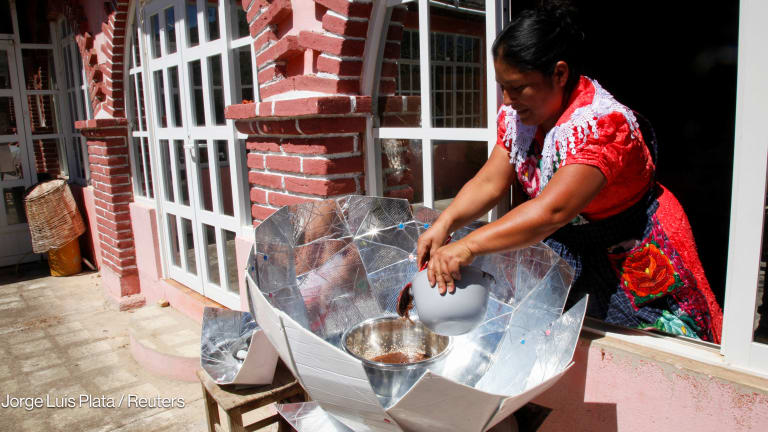
I recently visited the Slovakian capital of Bratislava for the first time and as I was approaching the city from the airport, I saw row after row of high-rise residential buildings on the other side of the Danube River. These block-like behemoths dominate the skylines of most cities in Central and Eastern Europe. They were built over 50 years ago during the Soviet era from mass-produced, prefabricated panels that — though allowed for fast and inexpensive construction to house large numbers of people — are extremely energy inefficient.
At the time, no one worried about climate change or energy costs. Unfortunately, that has left a costly legacy for today’s residents — who struggle to pay heating bills that can be a considerable amount of their disposable income — and for the planet, given the high-rises’ energy inefficiency and contribution to a massive carbon footprint. The building sector accounts, directly or indirectly, for 38% of global energy-related carbon emissions, according to a 2020 report from the United Nations Environment Programme.
To solve the global housing crisis as well as the climate crisis, governments and key decision-makers should encourage investments in inclusive upgrades of existing dwellings aligned with the adaptation and mitigation needs.
—We need solutions that will work for those who are feeling the harshest effects of changing climate, from the informal settlements of Liberia to disaster-prone countries such as the Philippines. We can’t allow communities at the periphery — physically, socially, and economically — to be left out of solutions that help them adapt to and avoid crises.
A microcosm of a larger challenge
So how do we solve the global housing crisis in a world where an estimated 3 billion more people are expected to need adequate housing by 2030? And how do we do that while confronting a climate crisis, which is fueled by global consumption and development patterns that lead to increased carbon dioxide emissions?
Climate change mitigation can raise the cost of housing by increasing the quality standards associated with traditional construction materials. What we need instead is greater access to renewable and sustainable products needed most by vulnerable communities bearing the brunt of our changing climate.
The good news is that there are solutions that tackle both the affordable housing and the climate crises at the same time.
For example, through the Residential Energy Efficiency in Low-Income Households, or REELIH, program — funded by the U.S. Agency for International Development — Habitat for Humanity is helping residents in Central and Eastern Europe organize into homeowner associations. They have identified the cost of upgrades as a major barrier for those with the lowest incomes, so together we have called for subsidies to cover a percentage of the cost — and local authorities have agreed to such financial assistance.
As a result, associations in countries such as North Macedonia and Bosnia-Herzegovina have access to loans and subsidies that are allowing them to insulate facades as well as upgrade roofs, windows, and doors. The result is lower energy bills and reduced carbon dioxide emissions.
Those of us committed to ensuring everyone has a decent place to call home have a real opportunity to pilot and scale up such win-win opportunities. It’s more solutions like these, as well as recommendations we have produced and recently presented at COP 26 that we hope to build upon at two upcoming events: the Europe Housing Forum and the Asia-Pacific Housing Forum.
To solve the global housing crisis as well as the climate crisis, governments and key decision-makers should encourage investments in inclusive upgrades of existing dwellings aligned with the adaptation and mitigation needs of our time. This should include programs that focus on renovation, upgrading, and retrofitting to support the creation of affordable and adequate housing.
In Europe, national governments can make use of European Union funding from the European Green Deal and the COVID-19 recovery plans that focus on renovating and improving energy efficiency of residential housing.
Habitat and our partners are urging anyone with a passion for finding sustainable solutions to challenges such as housing and climate change to register for one or both of our forums and join us as we build a global movement to create more climate-friendly, affordable housing.
You can see the evident progress in the high-rises of Bratislava that have been renovated to become energy-efficient and covered in bright blues, yellows, and greens. They meet current housing and energy standards and are reducing both carbon dioxide emissions and saving a percentage of income that families spend on heating. Those buildings that have not been retrofitted, on the other hand, remain grey and drab — at a high cost to the families and the environment.
That contrast in the cityscape reflects our choice at this climate crossroads. We can accept the way things are and a future that looks bleak. Or we can paint a brighter vision of the future, one with fewer carbon emissions and more affordable places for people to call home.








